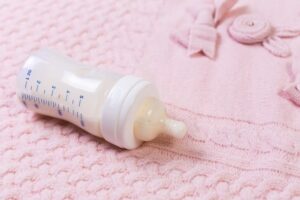How to Clean a Baby Bottle

For many babies, the formula becomes the main form of sustenance. To prepare a formula in an edible form for the baby, the caregiver is required to either mix powdered formula or transfer liquid formula into an easy-to-handle, doctor recommended baby bottle. Due to repeated transfer and consistent use of baby bottles, the formula can become a fertile ground for germs and bacteria to grow, and then pass onto your baby. All you need to do to avoid this potential hazard is follow strict cleaning procedures.
Sanitization
The ideal steps for sanitization include thoroughly cleaning each portion of the bottle. Good doctor recommended baby bottles often come with a built-in blender for mixing formula, cereals, and milk. In such bottles, one can simply add warm soapy water and blend the mix for efficient cleaning of the blender. The swirling motion of the water, along with the soap, will help catch the formula caught in the crevices of the bottle.
To clean the curvy handles of the bottles, use small sponges or specialized scrub brushes and rinse thoroughly to take out any remnants of a previous meal. Follow this up by drying the bottle well, either by air-drying it or by wiping it with a clean cloth.
Proper Storage
Followed by thorough cleaning, if you observe that the bottle is not going to be used for some days, you must store it well in a safe and clean location. Keep the bottle out of reach from your pets and young children. Also, keep the doctor recommended bottles away from places that are frequented by family members to keep the bottle free of dust and bacteria.
At this point, it is also important to add that the storage of your formula is as important as the storage of the baby’s bottle. The powdered formula tends to pick up bacteria, which is why it must be stored with care in a clean, dry location. Do keep a close look on the tin for signs of any rust if the formula is packaged in a metal tin. Dents or puffy ends on any containers can be dangerous.
If you use liquid formula, keep it refrigerated. This acts as a natural preservation technique and prevents the growth of bacteria.
Cleanliness in Area
To help reduce the chance of bacterial contamination during transfer, make sure that you maintain a clean, hygienic workstation. Wiping down your counter and washing any utensils before use are good practices. A clean, soapy cloth or disinfectant spray can be used on the counter to clean surface dirt and microscopic germs.
Yet another good practice is to keep all the mixing utensils along with the baby bottle on the counter, rather than placing them in a sink. The dampness of a sink and drain makes it an optimum environment for the abundant growth of germs and bacteria.





